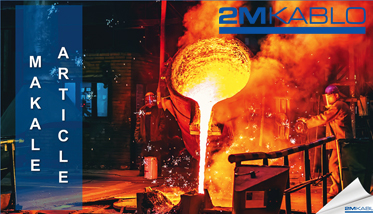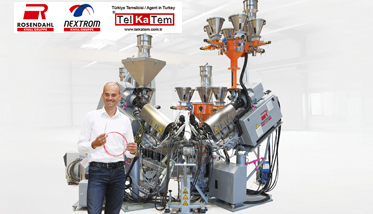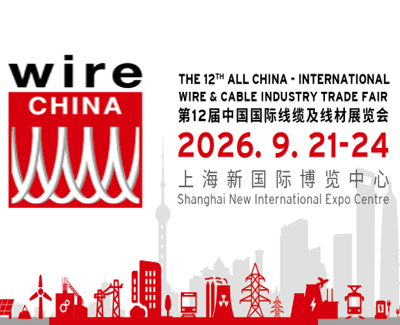2M Kablo Silicone Rubber For Cables
 Insulating and sheath materials used in cable production must often have excellent properties to meet customers’ requirements such as resistance to fire, strength, flexibility, no release of toxic gases in case of burning, and resistance to chemicals. These are the situations that require the simultaneous provision of expectations such as these.
Insulating and sheath materials used in cable production must often have excellent properties to meet customers’ requirements such as resistance to fire, strength, flexibility, no release of toxic gases in case of burning, and resistance to chemicals. These are the situations that require the simultaneous provision of expectations such as these.Silicone rubber, as a member of siloxane polymers is an organic/inorganic hybrid macro-molecule polymer with extraordinary flexibility that has various properties such as thermal stability, hydrophobicity, dielectric properties, weather resistance, transparency, and biocompatibility, as well as meeting all these expectations. Silicone rubbers belong to the elastomer class and after mixing with fillers and other components and cross-linked through vulcanization, they exhibit extraordinary performance than most elastomer. The vulcanization process involves the formation of cross-links between long rubber molecules so as to achieve improved elasticity, resilience, tensile strength, hardness, weather resistance, and etc. The final properties of a rubber material are determined by the properties and quantity of the main components, the production method of compounds and the degree and method of vulcanization.
The rich chemistry of silicone rubber enables it possible to be used as a cable insulation and sheath material, and the desired properties can be improved or costs can be reduced with the additives used in the compounding.
Silicone insulated cables have a high thermal resistance temperature range and generally show superior performance between -40°C and +180°C. In addition, with the effect of the additives used in the polymerization process, some special silicone types withstand temperatures up to +300°C by preserving their mechanical properties for a certain period. Over and above its thermal resistance, silicone insulated cables also have excellent flexibility. Although it does not offer the same mechanical strength and shear resistance compared to many other elastomers, the desired mechanical properties can be achieved with the prepared recipes.
The mineral structure of silicone rubber makes it a unique insulation material for fire-resistant cable production to ensure circuit integrity. It also has good oil and solvent resistance, ozone, and weather resistance. In addition to maintaining circuit integrity, having LSZH (low smoke zero halogen) property makes silicone cables especially suitable for fire situations, which is an additional advantage. For this reason, R&D studies on the use of silicon in the cable industry generally aim to protect the conductor in the event of a fire, and thus to preserve the circuit integrity, with formulations prepared using different reinforcement materials and recipe developments.
Silicone rubber compounding is the art and science of selecting the best performing rubber type, additives and their quantities from a variety of raw materials, as well as producing an easily processable compound that is competitively priced and exceeds the customer's final product requirements.
While giving the desired properties to the compound, it also requires experience to obtain easily processable compound and to ensure a homogeneous distribution of all components. Therefore, to obtain optimum formulary is to find the best match, that is, the best balance of properties. This is where the "art" of formulating comes into play.
In silicone rubber compounding, various components are added to the silicone rubber, such as inorganic fillers, ceramic agents, antioxidants, flame-retardants, coloring agents, catalysts, and more. Each ingredient added has a different effect on the final product.
• Catalysts, also known as vulcanizing agents or initiators, initiate cross-linking reaction of polymer chains, which is also called as “vulcanization”. They play a key role in transforming the main raw compound from a soft form to a relatively hard, elastic rubber form.
• Quartz is the most widely used inorganic filler and is often added to reduce cost and increase product strength: High ratios increase the hardness and strength of the product, while negatively affects the elongation at break of the product.
• Flame retardants exert their flame retardant effects through several mechanisms, such as endothermic effect, covering effect, inhibition of chain reaction, asphyxia of non-combustible gas, etc. Most flame retardants achieve the purpose of flame retardant through the combined action of several mechanisms. The largest group of mineral fire retardants are metal hydroxides. They act as fire retardants by releasing water vapor through endothermic decomposition leaving a thermally stable inorganic residue. When used as a filler in polymer composites they dilute the combustible polymer decomposition products with water, cooling the condensed phase through the endothermic dehydration.
• Ceramifying agents are added to compounds to enable the formation of a ceramic structure in the silicone during combustion, thus reducing heat transfer to the insulated material.
As 2M KABLO, we produce many different silicone compounds to be used both in the insulation and sheath structures of the cable and produce different cable types according to customer demands.
Considering that various types of cables are used everywhere for various applications, fire resistance in cables is of great importance. For this reason, factors such as flame transmission, gases released in case of combustion and their amount, smoke density should be guaranteed by standards in order to minimize loss of life and property.
The cables produced within 2M KABLO undergo fire tests given below, and the cables are certified by a certification organization approved by the customer and supplier.
Vertical Flame Test for Single Cable: IEC 60332-1
Vertical Flame Test for Bunched Cables: IEC 60332-3
Horizontal Flame Test: IEC 60331-21
Horizontal Flame Test: BS 6387 C
Electrical Continuity under Water: BS 6387 Cat W
Mechanical Impact Under Fire Conditions: BS 6387 Z
Impact and Electrical Continuity Under Fire Conditions with Water: EN 50200 ANNEX E




















